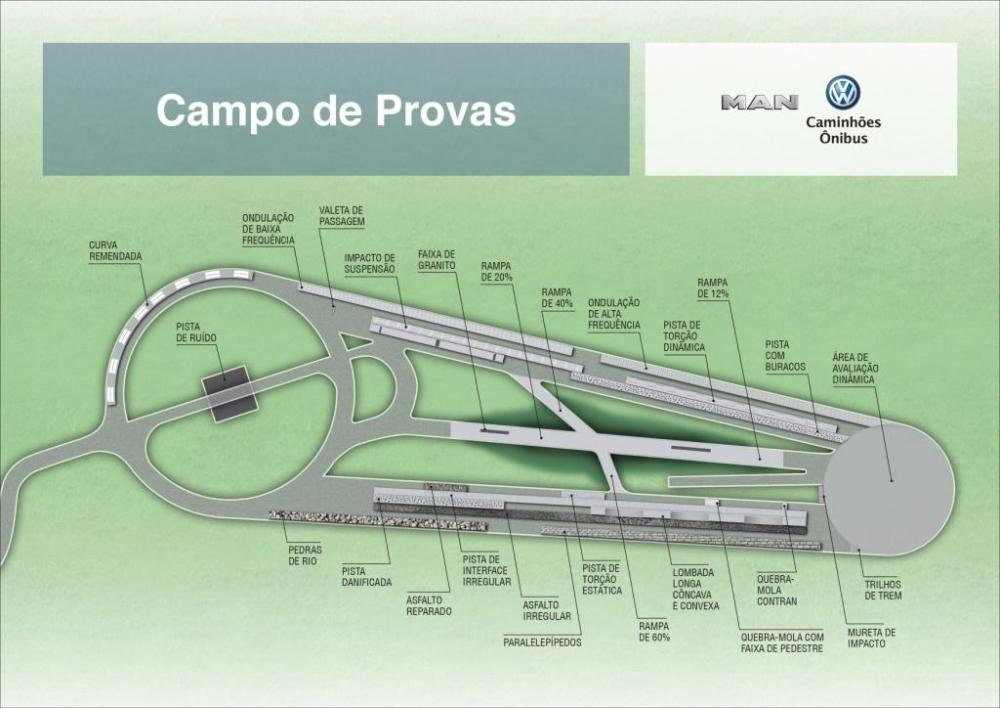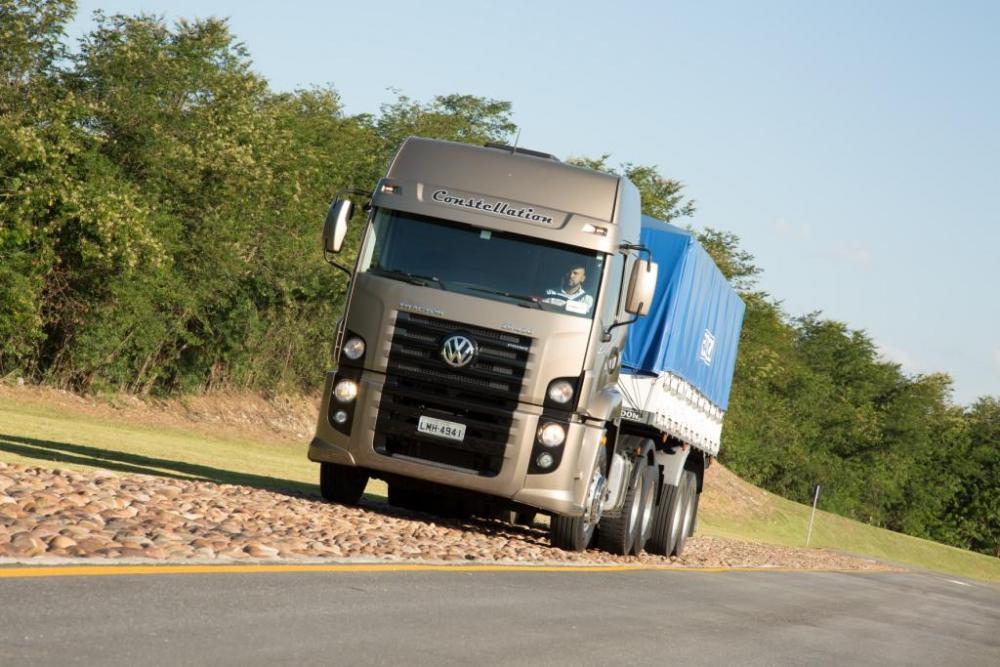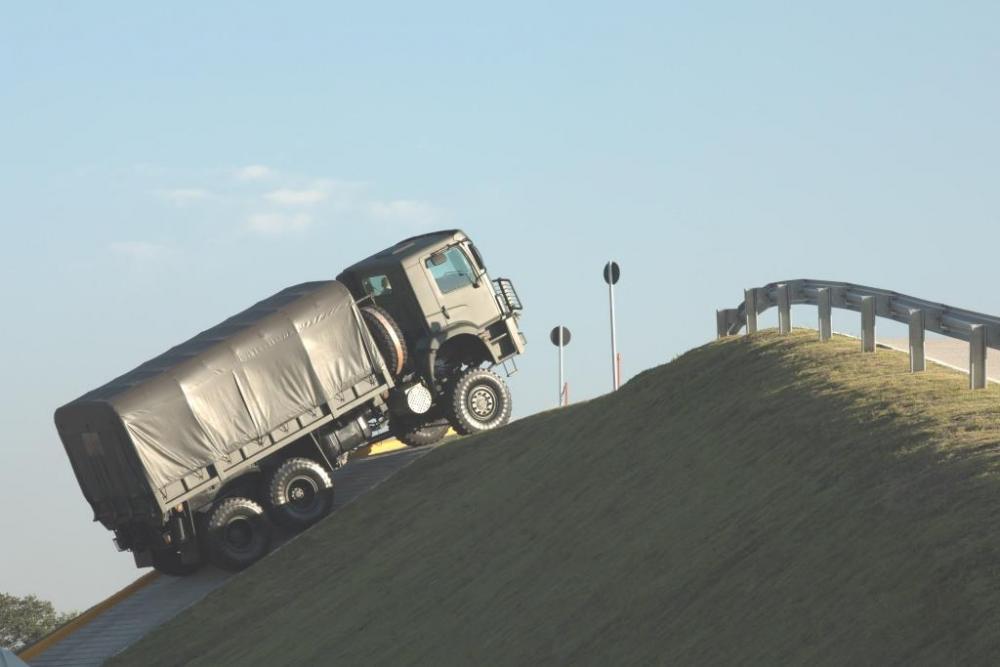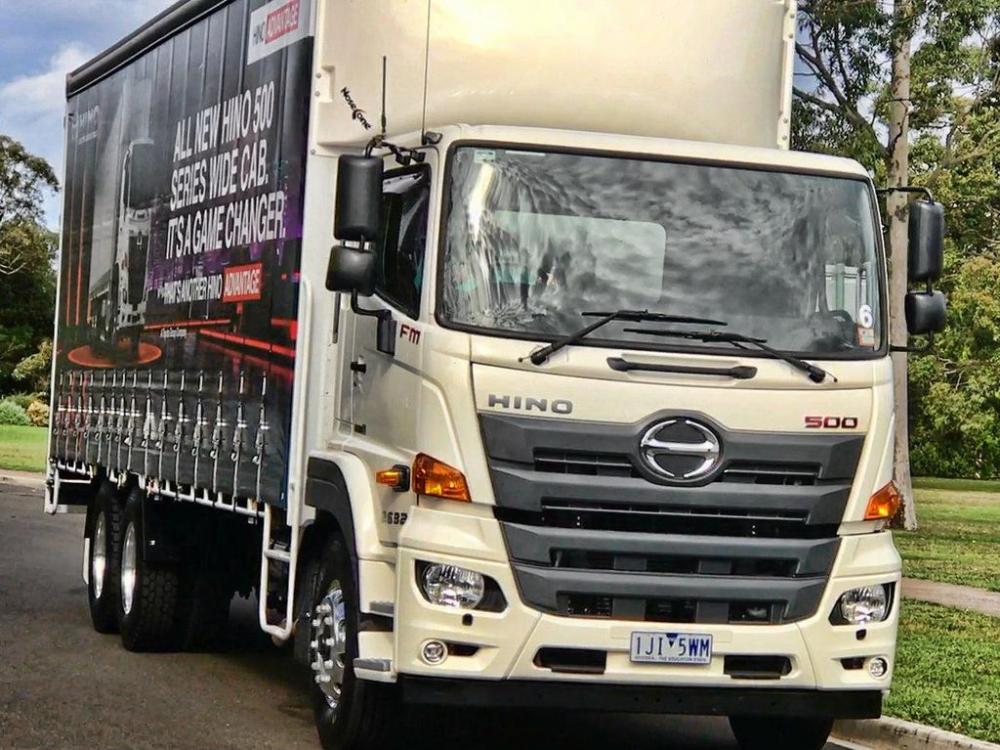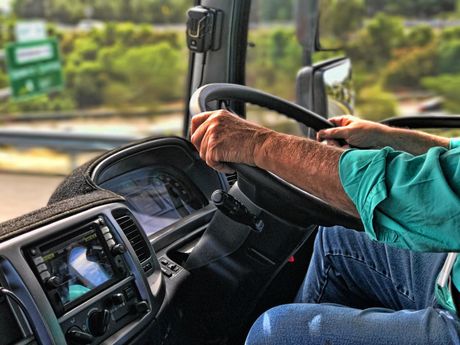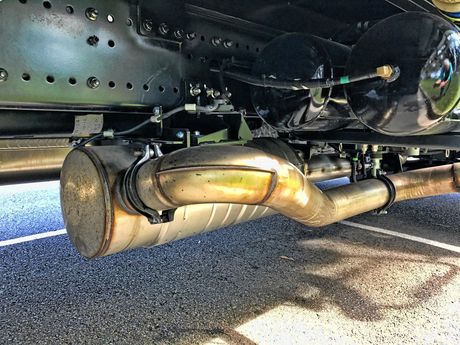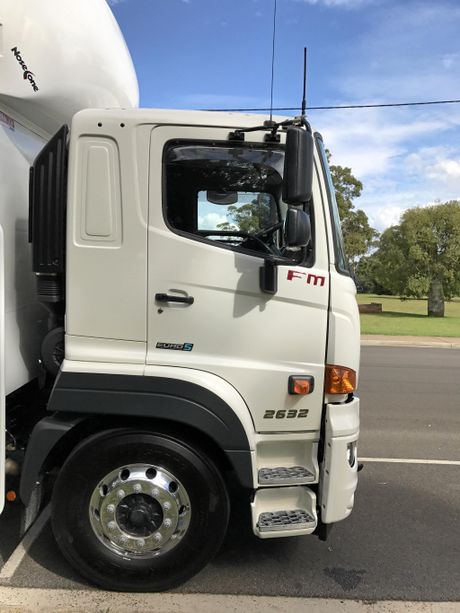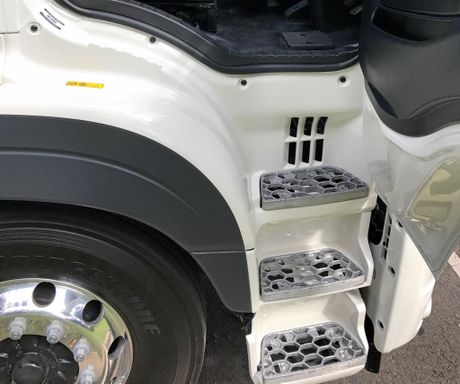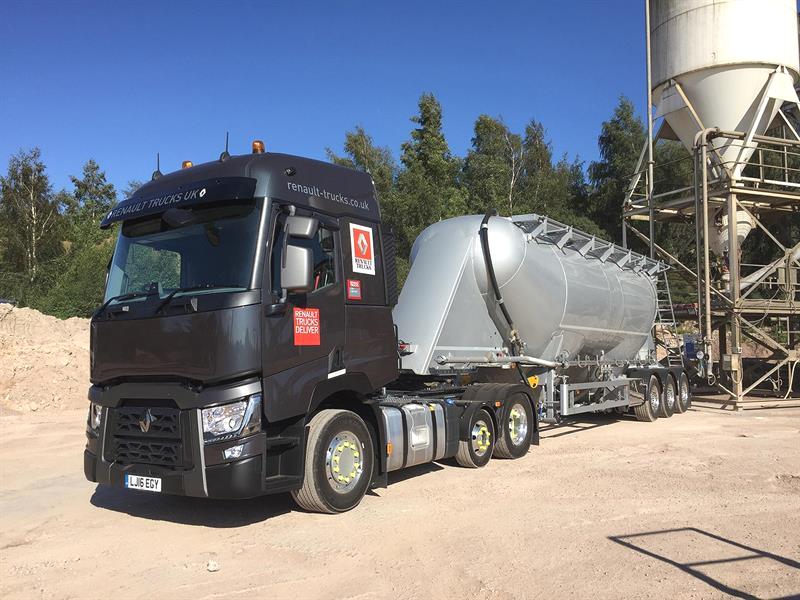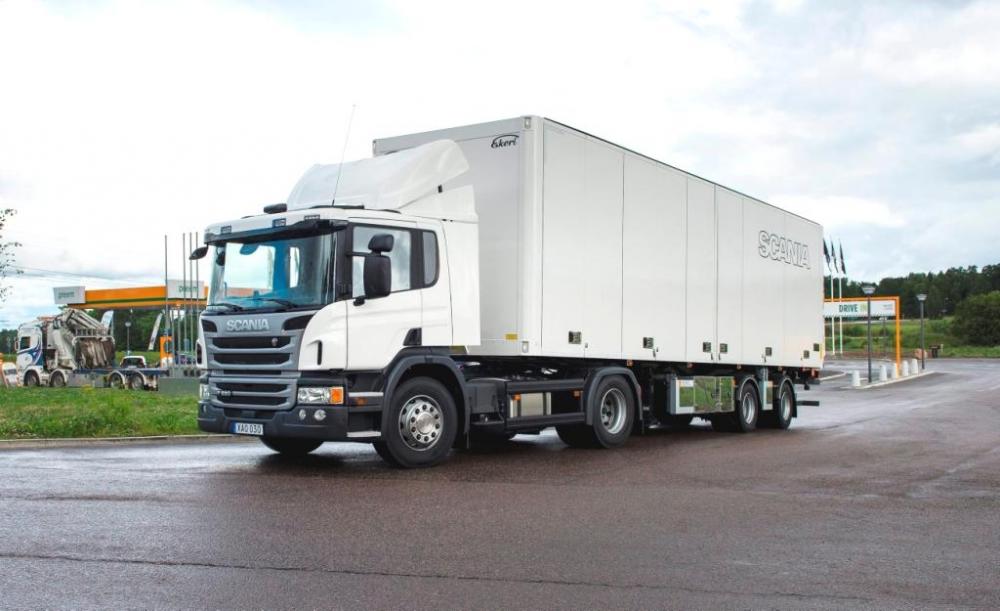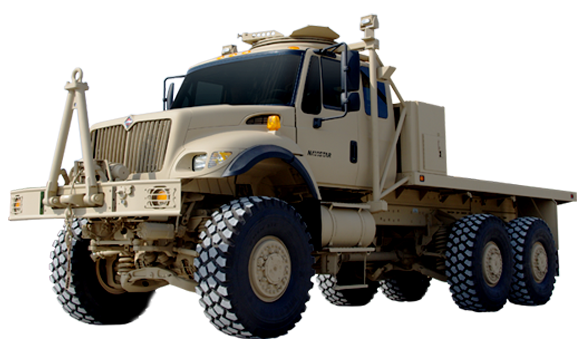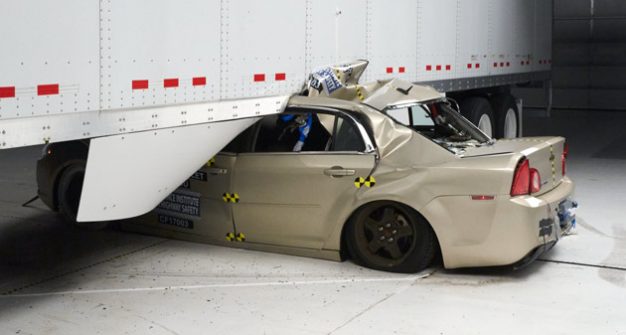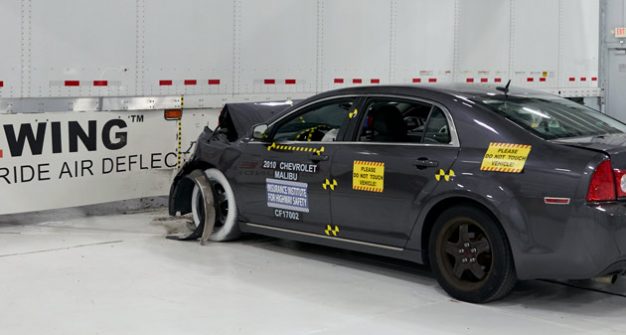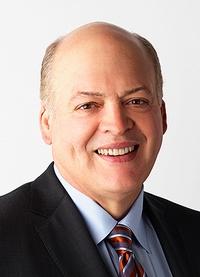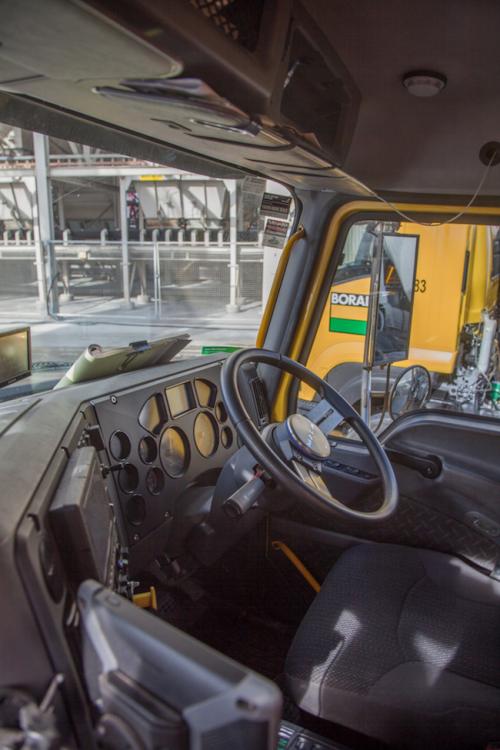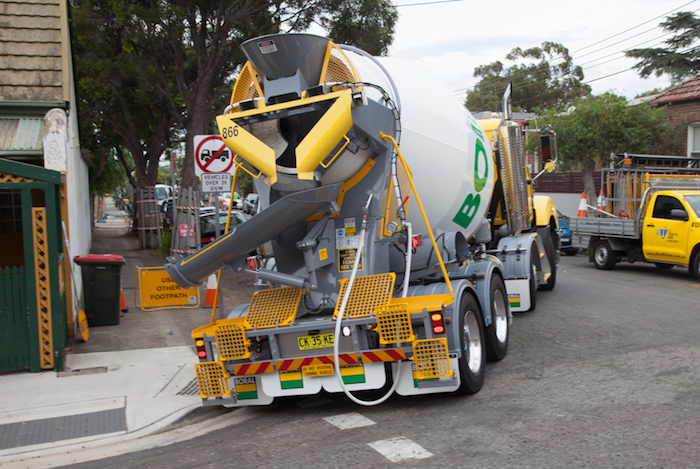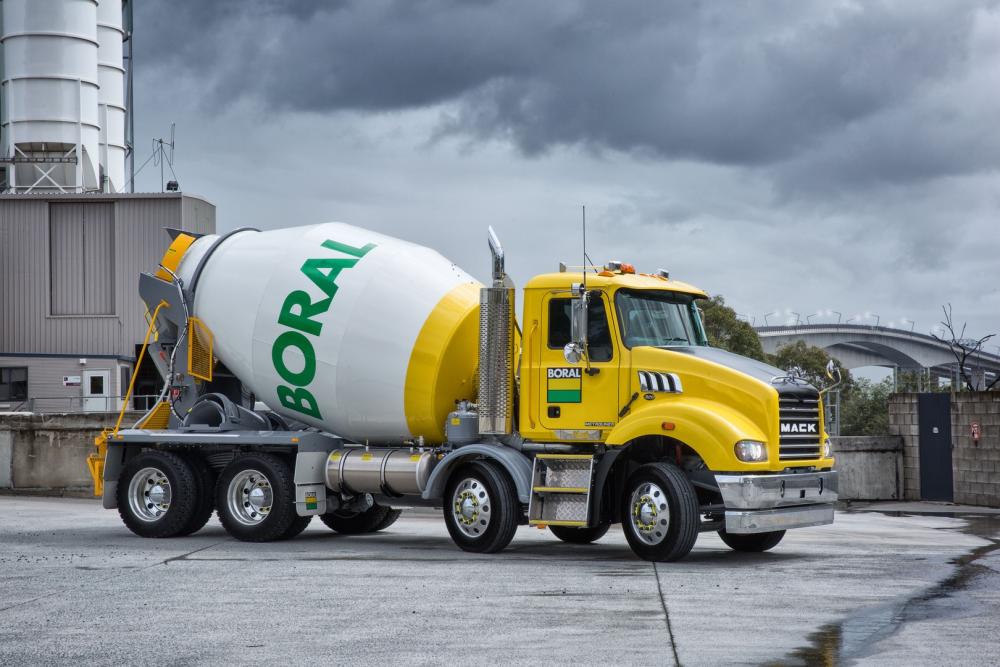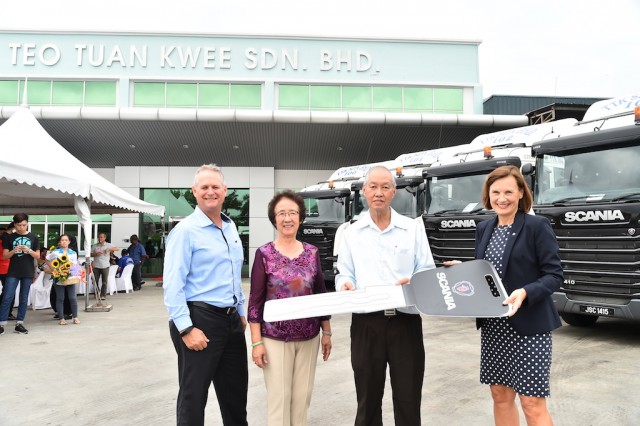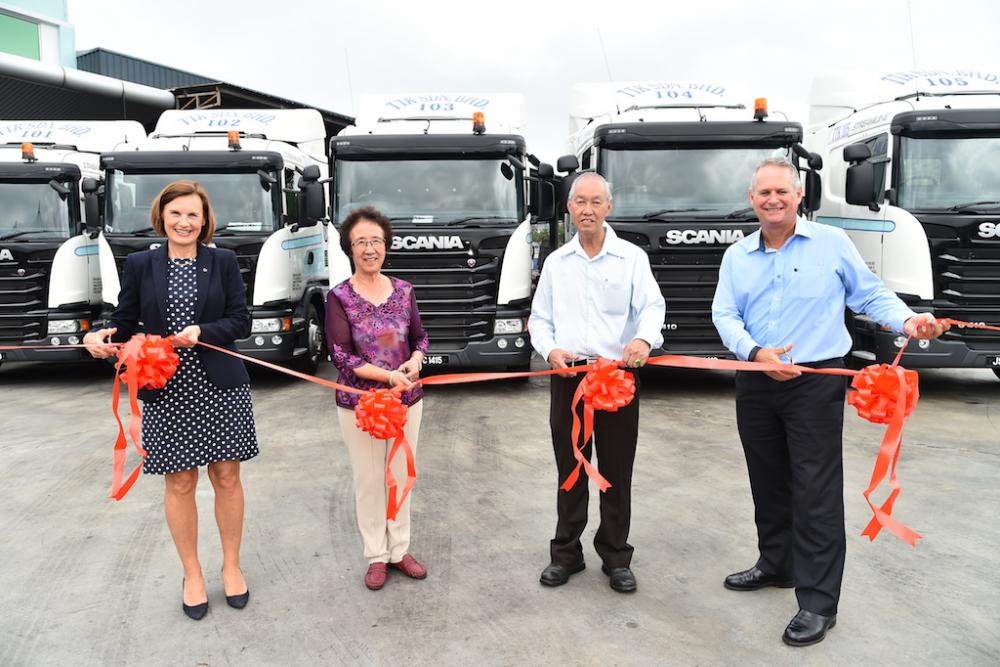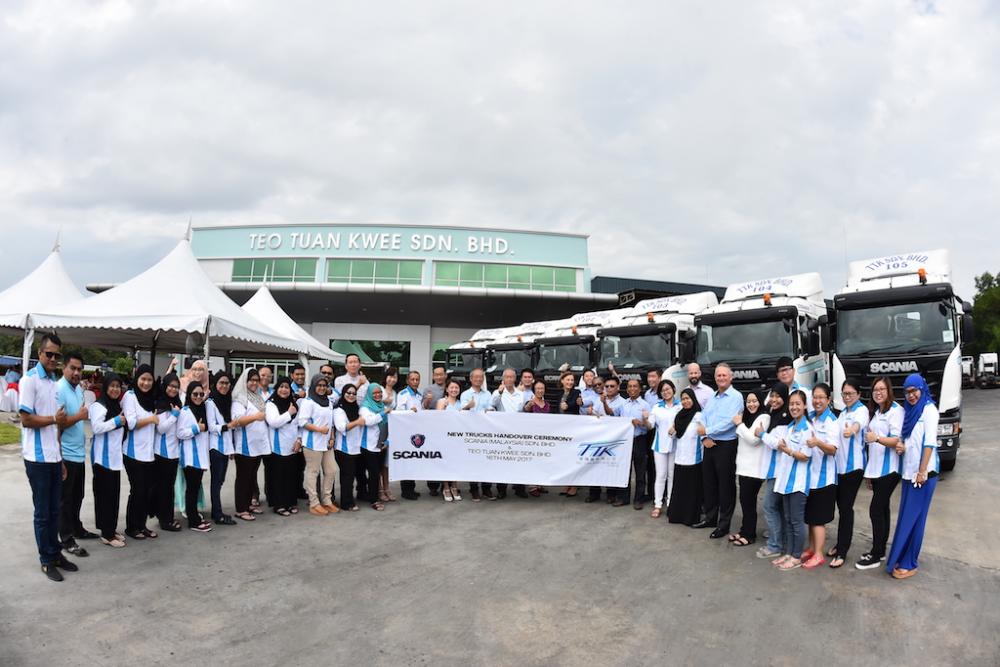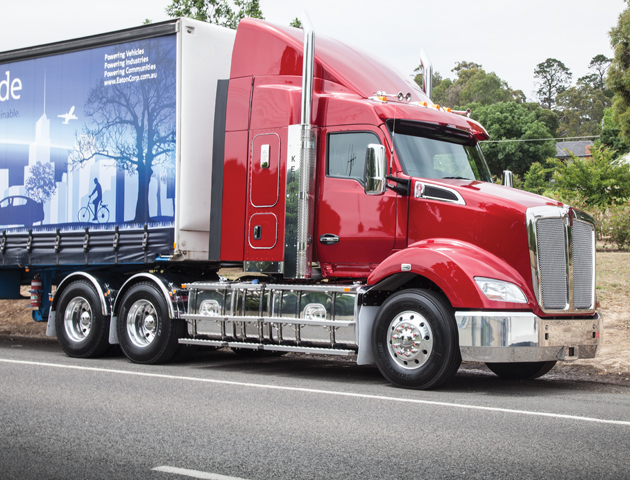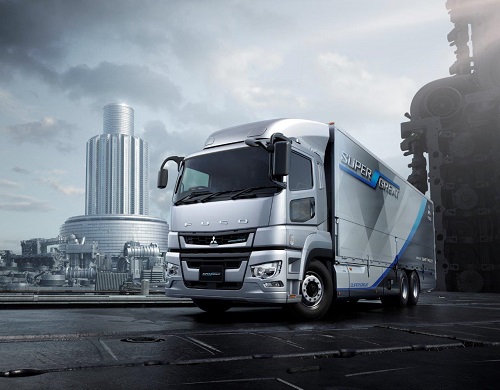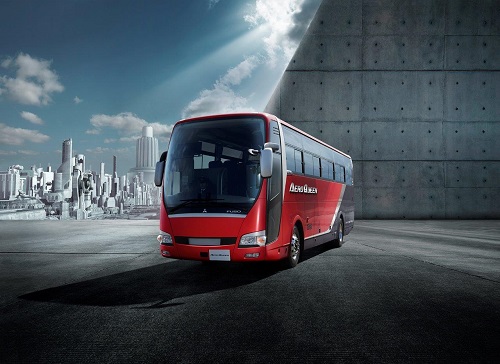
kscarbel2
Moderator-
Posts
17,893 -
Joined
-
Days Won
86
Content Type
Profiles
Forums
Gallery
Events
Blogs
BMT Wiki
Collections
Store
Everything posted by kscarbel2
-
The bus immediately caught my eye as well.
-
Volkswagen Truck & Bus Press Release / May 11, 2017 With the greatest diversity of obstacles per square meter, the new MAN Latin America proving grounds is the most efficient on the continent in terms of harnessing the space and complexity of the tests. It is the only facility in Latin America with ISO 10,844 international certification relating to vehicle external noise level approval. With 35,500 square meters of area, the equivalent of four soccer fields, the facility is the first for testing of commercial vehicles of the VW Group in Latin America. Video - https://vimeo.com/216871858 "We have a fleet with over a hundred trucks and Volkswagen and MAN buses in tests all over the country. Every month, they run about 300,000 kilometers. Supporting this testing we have a team of almost 600 professionals devoted to the development of our products. Our investment is significant to ensure quality and consequent customer satisfaction. The new proving grounds arrives to give even more efficiency to this work and integrates the financial resources that we continually apply in the country, "says Roberto Cortes, chairman and CEO of Man Latin America. One kilometer at the proving grounds can correspond to 50 km on the roads. In all, there are 26 different road conditions for truck testing. It is a high concentration per square meter to create the most demanding scenario possible. High intensity reduces the time of testing, giving even more efficiency to evaluations and positively impacting on the project as a whole of the vehicle. The undertaking delineates a controlled environment in order to guarantee the reproducibility of the test conditions and thus the best evaluation of the data for the maximum performance of the vehicle in the rounds in everyday situations of the customers. The 26 different events consider, for example, special pavements like river stones, cobblestones, train tracks, undulations in the so-called cow ribs, lumbar, metal plates with patched asphalt and also finely calibrated potholes. There are special ramps that can reach up to 60% inclination to test custom-sized trucks, such as the Volkswagen Constellation 31.320 6x6 developed for the Brazilian armed forces. Lighter inclinations represent departures and resumes to evaluate brake efficiency and cab tilting. Extreme twist situations serve to validate chassis structural components. .
-
Ford Trucks Brasil Press Release / May 3, 2017 In the trucking world, miles don't count distances, they tell stories. And it's in every one of those life stories that Ford trucks inspires to evolve into what we do because the trucking world can't stop. .
-
Bob, the chassis is indeed custom. Note the independent suspension front and rear by Hendrickson with AxleTech axles.
-
Road Test: Hino's new FM 2632 Bruce Honeywill, Big Rigs / May 22, 2017 We pick up the Hino FM 2632 for a day on the road to evaluate the new 500 series wide cab. I had driven a selection of these newly released Hinos out of Sydney a month or two ago, this was a chance to get to know one of the variety just a little better. The configuration is a 6x4, curtain-sided flat top. A configuration with a 26 tonne GVM, and with a load of bulk bags of sand we are grossing around 20 tonnes. An easy day is planned, just a run from Brisbane out through the hinterland of coastal Queensland, up the range to Toowoomba, take a few pics, grab a bite and back down the range and home. The FM 2632 nomenclature translates to you and I as a truck with a 26 tonne gross vehicle mass and a 320 hp engine. The FM badge of the 500 series tells you this is at the heavy end of the line-up, working up in categories from the FG through the GH and FL to the FM. The engine in the FM 2632 is a nine litre (just under) in-line six cylinder block with power peaking at 320 hp at 1800 rpm. Maximum torque is 1275Nm that peaks at 1100rpm and plateaus through to 1600rpm. The transmission is fully automatic with a six-speed Allison 3200 series. I chose the climb and descent of the Toowoomba Range as a reasonable challenge to ascertain the viability of a six-speed auto handling decent climbs with a 320hp engine and a 20 tonne truck. Hell, there are plenty of passenger cars and four wheel drives with six speed transmissions, but a truck? We'll see. On the road Three easy steps pull me into the driver's seat, easy and comfortable access for a truck specced for distribution work with likely plenty of getting in-and-out for the driver. Suspension seats for both driver and passenger bring a nice touch, and would be appreciated when an off-sider is used for transport of such commodities as furniture and irregular bulky items when two operators are required. The layout from the driver's point of view is efficient with all gauges and controls within easy reach. You ride tall in the FM, with real truck's eye view of the world. Push D-for-drive, touch the throttle and you are away. Like most Japanese manufactured trucks in this range, the FM is very easy to come to terms with, an expectation in a market where truck driving is perhaps not always the first vocation of the driver. Many automatic and AMT transmissions use the erectile gear lever metaphor as an operational interface, however the Hinos have a push button R-N-D set up on a console extending back from the dash. The truck handles the traffic comfortably and easily, visibility through the huge windscreen is beyond any normal expectation. With Brisbane behind us, the first hill is at Minden and the auto transmission came back one click into fifth and pulled the truck over the crest without any unexpected dropping of road speed. But the big one was yet to come. The Toowoomba Range is the real test on which I wanted to try this six-speed Allison transmission, and I soon found out that the 1275Nm of torque, stretched across a broad plateau, had lot of staying power. In the first pull out of Withcott, the Allison comes back only one gear as we head for the first saddle. Then the real climb begins. With six gears and 20 tonnes, of course the transmission is a little gappy. But this is a transmission and engine combination that works intelligently and selects gear shifts after hanging on to around 1000rpm. It certainly does not have that old clunk and scream of Allison transmissions of yesteryear. On up the hill, the transmission works back through five, four, three, back up to four, and on the last pinch to the crest of the range comes back to second gear but is still holding a road speed around 30kmh. And we are in Toowoomba. Time to check out the manual override of the transmission. Just double click the main control and the gears are now controlled by up and down arrows. No worries, I am now mentally ready to come down the Range. A little lunch and a few photographs and once more we drive along the top of the range, around the big right-hander and pull out around the big boys as we come down. After working out the manual system of the Allison I reckoned stuff it, I'll see what this truck can do using its own brains, and in full automatic we drop into the steep descents. I was surprised. A slight touch of the foot brake and the engine / transmission combo held road speed at 60kmh, coming back to fourth and third gears of its own volition. And that's how we did it, down the range swinging around B-doubles and pocket road trains, the Allison and the engine brake working together to make the descent safe and easy. Hino FM 2632 Engine: AO9C-US six cylinder in-line, turbocharged and intercooled Capacity: 8.866 litres Power: 320hp @ 1800rpm Torque: 1275Nm 1100 to 1750rpm Transmission: Allison 3200 series 6-speed double overdrive with electronic control GVM: 26 tonnes Emission Management: Euro V, Selective Catalytic Reduction (SCR / AdBlue) .
-
Ewals Cargo Care Press Release / May 15, 2017 Last week Ewals Cargo Care presented the Duo trailer movement at the Transport Logistic fair in Munich. The Duo trailer is a combination of one truck towing two trailers of 13,6 meters, linked by a “dolly”. The Duo trailer is not yet allowed to drive on the European roads, although it is successfully tested on a small scale in Sweden. At Ewals Cargo Care, we see some major advantages like a CO2 reduction of up to 40%, cost reduction for customers, and relief to a decreasing population of drivers. Furthermore this transport concept makes maximum use of intermodality by using existing standards (13,6m trailer) and existing infrastructure (rail wagons, yards, ferry slots). Therefore we see this as an additional solution to our intermodal transport services: next to single combination road, rail and ferry. . . .
-
HGVUK / May 21, 2017 Renault Trucks will be exhibiting three vehicles from its construction range at the forthcoming TIP-ex event (1-3 June; Harrogate Convention Centre). Renault Trucks returns to Hall M at Tip-ex/Tank-Ex 2017 with three robust trucks from its highly acclaimed construction range that underline the manufacturer’s position as the customer cost champion. The first two vehicles are 32-tonne 8×4 tippers – a Tarmac-spec 13-litre C520 and an 11-litre C430 Tridem with steering axle offering optimum manoeuvrability. Both trucks are equipped with PPG insulated aluminium aggregate bodies, carefully configured to suit a wide cross-section of multi-axle tipper operations. For operators looking for the manoeuvrability of a six-wheeler with the load capacity of an eight-wheeler, the Range C Tridem with factory-fitted extra axle adaption provides an effective solution. As well as improved site access, the manoeuvrability advantage of the Tridem’s rear-lifting axle keeps the truck closer to the kerb than a traditional 8×4 when turning left, which can help reduce the high-risk gap for cyclists. The third vehicle on the Renault Trucks stand is a lightweight T460 lightweight 44-tonne 11-litre 6×2 tractor unit with mini mid-lift (MML) suitable for aggregate or liquid applications featuring a factory-fitted PTO and tipping equipment. The Range T MML derivative, being up to half a tonne lighter than the standard 6×2 mid-lift, offers significant payload advantages for operators. Nigel Butler, Commercial Director, Renault Trucks UK, says: “With our unrivalled reputation for robust trucks designed for exceptional mobility in demanding environments and with optimised payload for maximum profitability, Renault Trucks is the UK construction industry’s customer cost champion. We offer a fully-integrated service for all sectors of the business from brick and block, aggregate delivery to quarrying, for both on and off-road applications. Tip-ex 2017 is the ideal opportunity for operators to discover more about our fuel-efficient trucks and the first class service support from our dealer network.” All Renault trucks are available with Euro-6 Step C-compliant engines, which can deliver reduced fuel costs of up to 2 per cent whist increasing payloads by up to 114 kgs. Visitors to the Renault Trucks stand will also be invited to join in the company’s campaign entitled, #proudprofessionals. Nigel Butler continues: “Our transport industry is well-regulated and highly professional, yet public perception can all too often be negative. That’s why we want to recognise and shine a light on everyone who works in transport and logistics, from technicians to truck drivers to change public perception and generate a sense of pride and self-belief in every individual with our #proudprofessionals initiative.” .
-
The Angelwing design cleverly addresses two issues. It provides side underrun protection, and acts as an air deflector to eliminate turbulence under the trailer for enhanced fuel economy. It's a win-win. Whenever I visit home, I notice that people are driving worse than ever. I have no answers for you there. .
-
Scania Group Press Release / May 22, 2017 Scania France has announced its first sale of an ethanol-powered truck to Transports NJS Faramia, a specialist in temperature-controlled transport. Scania is presently the only manufacturer to offer ethanol-powered heavy vehicles. With ED95, carbon emissions can be reduced by up to 90 percent. The heavy vehicle grade ED95 fuel was granted favourable taxation by the French Government earlier this year and hauliers can also benefit from accelerated depreciation of their vehicles. Additionally, ethanol qualifies for the highest environmental level in the French Crit’Air air quality vehicle certification scheme, which is in force in major French cities. Forerunner in sustainable transport NJS Faramia will operate the Scania P 280 truck for temperature-controlled food distribution in the Marseille area. The transport company is a forerunner in alternative sustainable transportation solutions and has previously taken Scania gas-powered trucks in operation as well as low-energy refrigeration systems. “Our aim is to offer all our customers the best quality of service. Economic efficiency, social equity and environmental responsibility are objectives which engage NJS Faramia in developing sustainable transport and long-term customer satisfaction,” says Managing Director Victor Faramia. The ED95 fuel will be produced from pomace – grape residue after pressing – from local wineries. The pomace will be collected and processed by Union des distilleries de la méditerranée in Vauvert, near Montpellier. .
-
Volvo Trucks Press Release / May 21, 2017 Boat 8 – built at Persico Marine in Bergamo, Italy – is now complete, and is heading to the Boatyard in Lisbon, Portugal to be fitted out. It's a delicate operation, with the boat being delivered via both road and sea. .
-
U.S. Dept. of Defense / May 15, 2017 Navistar Defense LLC, Lisle, Illinois, was awarded an $18,778,845 firm-fixed-price foreign military sales (Iraq) contract for 115 medium tactical vehicles (https://www.navistardefense.com/NavistarDefense/vehicles/7000_mv/7000_mv). One bid was solicited and one bid received. Work will be performed in West Point, Mississippi; Ooltewah, Tennessee; and Marion Wisconsin, with an estimated completion date of Jan. 13, 2018. Fiscal 2015 other funds in the amount of $18,778,845 were obligated at the time of the award. U.S. Army Contracting Command, Warren, Michigan, is the contracting activity (W56HZV-17-C-0090). .
-
Car & Driver / May 22, 2017 When semi-trailer trucks and passenger vehicles collide, the Insurance Institute for Highway Safety says, mandatory under-ride guards on the sides of tractor-trailer rigs could save lives. The trucking industry, though, says a better solution would be to hasten the rollout of advanced safety technology. This spring, IIHS has been dramatizing its argument by crashing mid-size cars at 35 mph into the center of a 53-foot-long dry van trailer. It says these crash tests show that a well-built guard on the side of a semi-trailer can prevent roof-peeling car wrecks that are often fatal. “Our tests and research show that side under-ride guards have the potential to save lives,” said David Zuby, the Institute’s executive vice president and chief research officer, in a press release. “We think a mandate for side under-ride guards on large trucks has merit, especially as crash deaths continue to rise on our roads.” Federal law requires large trucks to have rear under-ride guards, but side guards are not mandated nationwide. Some cities, including Boston, New York, and Seattle, require side guards on city-owned and -contracted trucks. The IIHS—funded by the auto insurance industry—and its research arm, the Highway Loss Data Institute (HLDI), have been studying under-ride crashes for decades and have been crash-testing and rating rear under-ride guard protection on trailers from the biggest manufacturers since 2011. The tests this spring, though, marked the first time that IIHS had evaluated under-ride protection for side collisions. One test included a side guard called an AngelWing from a company called AirFlow Deflector, which was featuring IIHS’s test results prominently on its website. An IIHS spokesman said the group does not have a business relationship with AirFlow Deflector. The Institute said it tested AngelWing because it’s the only product it is aware of that trucking companies can buy that offers this protection. In another IIHS test, the trailer had a fiberglass side skirt that is designed only to improve a truck’s aerodynamics, not to prevent a car from sliding beneath the trailer. Results with that device were “dramatically different,” the IIHS said. As seen in the image at the top of this story, part of the car’s roof was sheared off, and its occupants likely would have suffered fatal injuries, the group said. Only the AngelWing guard prevented a mid-size car from going underneath the trailer (photo below). That under-ride guard also allowed the car’s airbags and seatbelt to properly restrain the test dummy in the driver’s seat. Its maker says the guard also has fuel-saving aerodynamic benefits that help offset the cost. This type of crash, with a car hitting the side of a trailer, was at the heart of a high-profile accident involving Tesla’s Autopilot semi-autonomous driving system. Ohio native Joshua D. Brown was killed when his 2015 Model S, in self-driving Autopilot mode, failed to activate its automated emergency braking system and ran into and under the side of a tractor-trailer rig. Tesla said afterward that the Autopilot system failed to recognize the white side of the truck against a background of bright sunlight. There were 1542 deaths from crashes involving both passenger cars and tractor-trailers in 2015, according to the most recent federal data as analyzed by the IIHS. Of those, 301 fatalities involved a vehicle hitting the side of the trailer, which was down slightly from 308 in 2014. There were 35,022 traffic deaths in total that same year. The American Trucking Associations (ATA), a group representing the trucking industry, said in an emailed statement that focusing on crash prevention, not adding side guards to tractor-trailers, is the best course for preventing under-ride deaths. “Side under-ride crash protection has several complicating factors—engineering tradeoffs involving weight, strength, and effectiveness—that have prevented a consensus around adopting side under-ride guards,” the ATA statement read. The group said side under-ride guards “would add significant weight and require stiffer trailers” that can develop cracks and wear out sooner, causing other safety issues. It said a wider deployment of advanced safety technologies, such as automated emergency braking and forward-collision-warning systems, would be their pick to help prevent under-ride crashes. Rear under-ride guards, essentially strong bars, are required on most tractor-trailers. They are sometimes referred to as Mansfield bars because of their supposed connection to Hollywood starlet Jayne Mansfield. Mansfield was killed near New Orleans in June 1967 when her 1966 Buick Electra 225 crashed into the back of a tractor-trailer, killing her and two other front-seat passengers. Three children in the back seat escaped with minor injuries. But like other lore surrounding Mansfield’s untimely death, it’s not completely true: Today’s Mansfield bar was not a direct result of the fatal wreck. Requirements for under-ride guards on medium and heavy trucks were first issued in 1953, long before the accident that killed the actress. NHTSA’s regulatory predecessor called for an updated standard in 1967, but it was not until 1998 that the federal standard that applies to semi-trailers was updated and strengthened. .
-
How Silicon Valley Spurred Bill Ford Jr. to Replace His CEO Car & Driver / May 22, 2017 Silicon Valley has played an outsize role in shaping Bill Ford Jr.’s thinking about the future of the auto industry. Although he didn’t know it at the time, two experiences in recent years left signature impressions that would ultimately lead to this weekend’s shakeup at the Ford Motor Company. The first came toward the end of his tenure as a member of the eBay board of directors, which gave Ford a vantage point into a business culture dramatically different than the one he understood in Detroit. As he watched companies like Tesla Motors and Google gain a foothold on the future, he grasped the magnitude of the changes legacy automakers needed to make to survive, including working with traditional competitors. “The whole ‘frenemy’ thing in Silicon Valley, that was something very foreign to us,” he told an audience at a Ford Trends conference in September 2016. “It was clear for us in the auto industry who your competitors were. Spending time in the Valley, it was a much more gray situation.” Ford’s 10-year tenure with eBay so impressed him that he brought the Ford Motor Company’s own board of directors to Silicon Valley for a visit in February 2016. During meetings with leaders from Bay Area companies, he realized one of the automaker’s board members, Jim Hackett, was already familiar with the sweeping cultural shift Ford wanted to inject into his own company. “Every one of them were walking right up to Jim, and they gave him a hug and said, ‘I didn’t know you were on this board,’ ” Ford recalled in a media conference Monday. “The leaders out there said, ‘My gosh, he’s one of the real original thinkers that we know, and you guys are really lucky to have him on your board.’ ” One experience taught him that seismic changes were ahead. The other taught him that he had a potential answer for them nearby. Within weeks of those meetings, Ford appointed Hackett to head Ford Smart Mobility, a new subsidiary within the company focusing on future-minded innovations. On Monday, Ford promoted Hackett to a more prominent role, announcing he would succeed the ousted Mark Fields as the Ford Motor Company’s new CEO. In his new role, Hackett will be charged with boosting a stock price that has tumbled roughly 32 percent over the past three years amid Wall Street concerns that the company has lost market share and lagged competitors. Even as he seeks short-term solutions to boost a flagging stock price, Hackett is also charged with ensuring Ford’s preparations for a future based more on broad mobility solutions and less on personal car ownership stay on target. There were concerns the company had fallen behind in some of those efforts as well, and Hackett and Ford Jr. twice sidestepped questions Monday on whether the company remains on pace to launch a Level 4 autonomous vehicle by 2021. But Ford Jr. broadly acknowledged the company needs to move faster. “The clock speed at which the world is moving—and our competitors, not just other OEMs—really requires us to make decisions at a faster pace,” he said. “I don’t think we missed any opportunities per se, but if we’re going to win in this new world, we have to move fast and trust people to move fast. “The execution against the vision has to be quicker.” Ford has made several investments in that future vision, including a $1 billion investment in Argo AI, a Pittsburgh-based company focused on building artificial intelligence and computer vision for self-driving vehicles, that was announced in February. Last August, the company announced investments in lidar maker Velodyne and Civil Maps, a California company that develops high-definition 3D maps for autonomous vehicles. At the same time, Ford acquired San Francisco–based Chariot, a ride-hailing shuttle service, and SAIPS, an Israeli computer vision and machine-learning company. Ford has also ramped up staffing in its Smart Mobility subsidiary, growing it from 12 employees at the outset in March 2016 to nearly 600 today, according to Hackett. While the subsidiary will continue to exist on its own, Ford Jr. seemed to regret that such a distinction has been drawn between the main company and the future-focused one. Going forward, “We won’t talk a lot about emerging versus core. This is one company,” he said Monday. “Ford Smart Mobility is not the place where new things happen and everything else goes on the way it’s been going on. We don’t want competing groups. We don’t want one group to feel like the cool group and the other to feel like the left-out group.” A central part of Hackett’s job will be to better integrate the two and communicate to investors a single vision as the company marries ride-hailing products and autonomous vehicles with its bread-and-butter business of selling cars. In that respect, he said, the future is no fantasy. Nor is it one that favors Silicon Valley over legacy automotive businesses. “The biggest challenge is to have everybody see the future and see their opportunity in that,” he said. “Secondly, it’s our right to win there. We don’t have to cede that to anybody. Tesla, anybody. It’s our right to win there.”
-
BC, after your many years of toil, this car has your name all over it.
-
In Sweeping Leadership Change, Ford Replaces CEO Mark Fields With James Hackett Forbes / May 22, 2017 Ford Motor’s board of directors was never fully sold on Mark Fields as chief executive, but they decided to give him a chance. Now, after less than three years in the job, Fields is out as CEO, and James P. Hackett, a former CEO of the office furniture maker Steelcase, is in, a sign that Executive Chairman Bill Ford isn’t wasting time when it comes to transforming the company his great-grandfather founded. While going out of his way to praise Fields for leaving Ford in a strong financial position, Bill Ford said: “The clock speed of our competitors requires us to make decisions at a faster pace. If we’re going to win in this new world, we need to break down the hierarchy, and we have to empower the team. We have to move fast, and we have to trust our people to move fast.” No one was more surprised by the swift leadership change than Hackett, who learned on Friday that he was being asked to take the reins. For the past year, he’s been running Ford’s Smart Mobility subsidiary which is developing new strategies for personal transportation. After a board meeting on Friday, Bill Ford met with Fields and the two men agreed it was time for him to retire. Ford then tapped Hackett, whom he has known for years and who he described as a “proven transformational leader” and “visionary thinker.” “He and I think very much alike,” Bill Ford said of Hackett, who served on Ford’s board of directors for three years before taking command of the newly formed mobility unit in 2016. “We’ve always clicked when it comes to thinking about the future,” he said, adding that Hackett also has the strong operating experience needed to run Ford’s core business and that he is skillful at integrating the two missions. Bill Ford laid out three priorities to get Ford back on track: sharpening execution of its day-to-day operations; modernize its business with the latest technologies like artificial intelligence, robotics and 3D manufacturing, and develop new businesses for the future. “Any one of those is a big task,” said Ford. “We have to do all three, and we will under Jim’s leadership.” Hackett compared the challenge of running a modern automaker to the complexity of solving a Rubic’s Cube. You can’t just solve one side of the puzzle. “It’s not lost on me. The license you get to makes change comes from taking care of where all the earnings come from.” And he acknowledged that it’s difficult for investors to measure Ford’s progress when it is inventing new businesses as the world is changing. “I understand that pressure, any time you are describing the future it’s ambiguous until you prove it. “ Fields, 56, had been with Ford for 28 years and was instrumental in helping turn the company around under his predecessor, Alan Mulally. In fact, it was Fields’ “Way Forward” restructuring plan for North America in the mid-2000s that Mulally adopted as the core of his global rescue plan that helped Ford avoid bankruptcy during the Great Recession. Ford also promoted three other executives to key leadership roles on Hackett’s team. Jim Farley, a former Toyota Motor executive who runs Ford’s European business, will become president, Global Markets, and Joe Hinrichs, currently head of North America, will become president, Global Operations. In addition, Marcy Kelvorn, Ford’s chief information officer, will also become president, Mobility.
-
Fields to retire as Ford CEO in management shake-up; ex-Steelcase chief Jim Hackett named new CEO Automotive News / May 22, 2017 DETROIT -- Ford Motor Co., in a broad management shake-up, named Jim Hackett, former CEO of Steelcase, as its new CEO, replacing Mark Fields, who is stepping down amid pressure from shareholders over a slumping stock price. Ford said Fields, 56, has elected to retire from Ford after 28 years with the company. “We’re moving from a position of strength to transform Ford for the future,” Executive Chairman Bill Ford said in a statement Monday. “Jim Hackett is the right CEO to lead Ford during this transformative period for the auto industry and the broader mobility space. He’s a true visionary who brings a unique, human-centered leadership approach to our culture, products and services that will unlock the potential of our people and our business.” Hackett, 62, most recently served as chairman of Ford Smart Mobility. Ford created that subsidiary last year to handle its investments in autonomous vehicles and new mobility services. Fields has been pouring billions into self-driving cars and ride-sharing experiments as its traditional car business has struggled in a slowing U.S. market. In addition to the CEO changes, Ford announced: Jim Farley is appointed executive vice president and president, Global Markets. He previously served as president of Ford’s Europe, Middle East and Africa. Farley will be returning to Ford headquarters in the U.S., a spokesman said. Among his new duties, Farley will preside over the Lincoln luxury brand. Lincoln President Kumar Galhotra will report to Farley. Joe Hinrichs, formerly president of the Americas, was appointed executive vice president and president, Global Operations. Raj Nair will continue to serve as head of Ford product development, and will report to Hinrichs, a spokesman said. Marcy Klevorn is appointed executive vice president and president, Mobility. Those three appointments are effective June 1. New leaders to succeed Hinrichs, Farley and Klevorn will be the subject of a future announcement, Ford said. Paul Ballew was also appointed vice president and Chief Data and Analytics Officer. Mark Truby also replaces Ray Day as head of communications. Day will stay on to “provide consulting services” through the end of the year. Truby will report to Bill Ford. Forbes first reported the management changes Sunday night. Ford shares were up 1.75 percent to $11.06 in pre-market trading. Stock down Fields, 56, had been under pressure for the company’s lagging stock price and lower-than-expected profits so far this year. Board members had recently reportedly questioned Fields’ strategy for the future of the company, which relies on heavy investments in driverless and electric vehicle technology. Since Fields took over as CEO from Alan Mullally in July 2014, Ford’s stock price has fallen nearly 40 percent. Last week, Ford announced it would slash 1,400 salaried workers in North America and Asia as a cost-cutting move as it continues to spend on what it calls “emerging opportunities.” That type of move, normally reserved for distressed business units and economic downturns, came amid a relative boom time for the industry. Ford career Before he was named CEO, Fields served in a number of positions, including COO and president of the Americas. During his time leading the Americas, Fields was the architect of Ford’s “Way Forward” plan to restructure the business as its profits disappeared during the last industry downturn. He also served as CEO of Mazda. When he took over for Mulally in 2014, Fields inherited an automaker on the verge of posting record profits. He also oversaw the transformation of the profit-generating F-150 to include an aluminum body, as well as dozens of other product launches. Fields also appointed a separate president to head the Lincoln Motor Co. in an effort to revive the luxury brand. Executives, including Chairman Bill Ford, praised Fields early on and said the transition between CEOs had been seamless. But Fields came under fire in recent years as Wall Street remained unimpressed with Ford’s profits and plans for the future. At last year’s annual meeting, one shareholder even asked to bring back Mulally -- a popular figure who helped save the company during the financial crisis. .
-
May 10, 2017 Camp Quality Convoy Victoria 2017 kicked-off before sunrise on the April 30th, with a procession of trucks making their way into the Avalon Airport. In the morning the truckers tucked into a delicious breakfast, and held their breath at the excitement of the Lead Truck bidding (an initiative where entrants raised a minimum of $1,000, and bid against each other to lead the convoy). When the dust settled, Daniel Crawford of Hallam Truck Centre came out on top! He won the honour of leading the convoy of trucks and motorbikes on the 50 kilometer drive to Tabcorp Park in Melton. The 300 polished and shining trucks made for an incredible spectacle stretching out into the distance. Locals came out to watch the procession go by and take in the display of motoring glory. A Family Fun Day at Tabcorp Park was held after the convoy, which was exceptionally well supported by the truckers and bikers (and their families), as well as many Melton locals. It was incredible to see! The day was full of family fun, good food, impressive vehicles (both bikes and trucks) and great people. The Show and Shine at the Family Fun Day was a crowd favourite, with all the drivers for taking the time to clean and polish their rigs – they were a truly impressive sight! Rod Patterson took out the People’s Choice for the event. Camp Quality thanks everyone involved in making the event a reality, and for helping us to raise $45,000! That's enough to deliver one Middle Camp this year so that kids can take an essential break from the stress and intensity of cancer. If you would like to be a part of Camp Quality Convoy Victoria 2018, please contact our Victorian Office on 03 9329 8660 * Camp Quality’s purpose is to create a better life for every child living with cancer in Australia. We are committed to delivering national programs that build resilience and optimistic behaviours for all children (0-13 years) living with cancer in Australia. .
-
Diesel News Australia / May Diesel took a trip to the Boral Enfield batching plant in Sydney to try driving a low rider. It was an opportunity to have a look at and experience the difference between the traditional agitator and Boral’s new low rider–design agitator being trialled there. This plant is one of many in the Sydney area working at full capacity as a series of major infrastructure projects have increased demand for concrete in the city. To get a handle on the improvement achieved by Boral, Diesel took two agitators out to a job. The first was the conventional agitator built in the past, and the second was using the new design. Apart from the new layout every other aspect of the truck was the same. Anyone who has steered an agitator at all will reaffirm the inherent instability of the platform. It’s a bit like being on roller skates, you have the feeling one false move and you will fall over. This makes the driver keep well within the parameters of safety, especially on roundabouts and other sharp turns. Jumping into the truck for the second delivery was a complete contrast. The truck felt just like any other, it could have been a fully loaded tipper or box truck. Even in a straight line the improved stability is obvious. When it comes to corners and roundabouts the driver feels in full control. At the same time there is great feedback from the truck. The seat of the pants feeling tells you just how the rear end is reacting. The result is a much more secure feeling at the wheel. You are no longer riding on roller skates, but a normal stable truck. The resulting truck, from what has been a two-year process, is a revelation. The prototype went on the road in April 2016 and all of the drivers in the depot who had a go with the truck wanted to drive it rather than their own. The principles behind this new design seem obvious when you look at the finished product. However, no one seems to have even thought about this in recent years. The question is, just what made Merv Rowlands, Boral Fleet Engineering Manager – Logistics, start thinking about this issue in a new way? “I was visiting Mack’s Mod Centre in Brisbane, where they make all the company-specific changes,” says Merv. “I was looking at some agitators which were for us, and the nature of the suspension and the cross members I saw just didn’t look right to me. “Within Boral Logistics, we only use Primaax suspension on all of our tippers and tankers. Then we looked at what they do in America and Europe – there’s no way they would fit air suspension on agis. Their chassis start at 9.5mm and go up, they even use double-wall chassis. They clearly see the hardest job for a chassis is to carry an agitator. “You can see it on our older agitators. Nearly every one will have a sub-frame crack. That will disappear now, because there is no sub-frame to crack. We are now having a lot more thoughts about what we are going to do in the future.” Read about the changes Boral made in the agitator design here. .
-
Big Wheels Malaysia / May 18, 2017 With almost four decades of experience in the transportation industry, Teo Tuan Kwee Sdn Bhd (TTK) knows what works best so it says a lot when the company has opted to buy another 50 Scania trucks to join the existing 182 Scania trucks it already owns. Operating a predominantly Scania fleet, TTK specialises in services such as palm oil tanker transportation, bonded lorry tankers, cargo transportation and container haulage and this is one of the largest ever orders in Malaysia from the Swedish company. “The vision is for TTK to become an outstanding and reputable logistics company in Malaysia and Singapore in next 5 years,” said TTK director Teo Chee Ben (张志敏) in Johor Bahru when receiving the latest batch comprising 26 units of the Scania G410LA6x2MSZ truck. Teo said the Johor based company selected its trucks based on the criteria of quality and high uptime, adding that the decision to buy more Scania trucks was also because of the good maintenance service provided. With its latest acquisition – facilitated by Scania Credit – TTK is also the first company in the southern region to acquire the Scania G-series trucks, which it will be using for its long-haul operations. The hardworking G-series can be configured to suit a huge range of applications – from long-haulage and distribution to the toughest off-road jobs – while providing powerful performance, fuel economy and safety. “We are proud to be a partner of TTK for its long-haul operations and for the long haul. It is investing in the total operating economy that Scania offers to create the best profitability for our customers,” said Managing Director, Scania Southeast Asia, Marie Sjödin Enström. “This is achieved through Scania’s sustainable transport solutions,” added Marie. TTK’s new trucks also come with the two-year free Scania Maintenance package, two years of free 24/7 Scania Assistance and a ten-year free Fleet Management System (FMS). The FMS is activated via a communicator that comes standard with the Scania trucks enables operators to achieve up to 10% fuel economy, collecting data on board Scania trucks that provides valuable insight, tracking and diagnostics into the driver and vehicle behaviour. This can bring significant benefits in increased uptime, improved safety and reduced operating costs; especially if coupled with Scania Driver Training and Scania Driver Coaching. Just minor adjustments to an experienced driver’s habits can result in fuel savings of up to 10% with the information acquired while keeping a constant speed can significantly improve fuel economy and reduce maintenance costs. Scania’s smart data collection makes this quick and easy. .
-
Kenworth T610 recognised by Good Design Australia Prime Mover Magazine / May 22, 2017 The aerodynamic design of Kenworth’s new T610 and T601SAR models has been recognised by Good Design Australia, the organisation behind Australia's annual Good Design Awards program. According to PACCAR Australia, the T610 received a ‘Good Design Selection’, with the judging committee stating, “The Jury takes their hat off to the design and engineering team. This is design excellence at its best.” According to Good Design Australia, involving customers in the design phase has resulted in a user-focused outcome. “The driving position in the Aero is just beautiful and it is clear the designers put driver comfort first. Overall, this project exemplifies good design at all levels.” .
-
UD Trucks Rolls Out Flagship Cabover for Japan
kscarbel2 replied to kscarbel2's topic in Trucking News
UD Trucks Press Release / April 18, 2017 . -
Mitsubishi Fuso Press Release / May 15, 2017 Kawasaki, Japan - Mitsubishi Fuso Truck and Bus Corporation (MFTBC) today announced the launch of both the “Super Great” heavy-duty truck, which has undergone a full model change for the first time in 21 years, and the “Aero Queen” and “Aero Ace” heavy-duty touring buses. In a conscious move to modernize Japanese driving habits and increase safety and efficiency, all these new trucks and touring buses are equipped with the new automatic mechanical transmission (AMT) as standard, a first time in Japan. The new FUSO models, that include Daimler technologies also used in other brands of the global CV Leader, feature some market-first top-class safety features, the best fuel efficiency in the market, and maximum maneuverability bringing the most comfortable driving experience to the road. “With this double launch we demonstrating FUSO’s ability to get back to the leadership position in our home-market Japan…” says Marc Llistosella, President and CEO of MFTBC and Head of Daimler Trucks Asia. Llistosella continues, “These flagship vehicles feature state-of-the-art technologies that enable best in class fuel efficiency, safety and comfort that will make them the first choice for customers and their drivers alike. At the same time, we invest heavily in our dealership facilities and the training of our sales and service staff, to ensure that our customers get the best overall package to make them successful in their business. I am confident, that with this revolution at FUSO we will be able to gain significantly market share” “Super Great” Heavy-duty Truck For the first time in the 21 years since 1996, the interior and exterior of the model in this range have been refined in a full-scale model change. Installed with two types of newly developed small-displacement engines (Models 6R20, 10.7 liters, 6S10, 7.7 liters), the new models have become extremely light compared with conventional vehicles. A newly-developed 12-speed automatic mechanical transmission (AMT) called “ShiftPilot” is installed in all vehicles, achieving comfortable, smooth shift operation. Advanced safety technologies have been implemented to reduce large truck accidents and enhance safety. These technologies include the “ABA4” brake to mitigate collision damage, and “Active Attention Assist” monitor that detects pedestrians ahead, developed as a part of the evolution of the MDAS-III technology for monitoring driver driving attention, and “Active Sideguard Assist,” the first technology in Japan to warn against danger hidden in the left blind spot. “Proximity Control Assist,” which comes with automatic stop and start functions, in addition to auto cruising, equipped with a function to maintain the proper distance between two vehicles, is also a new function added to the new Super Great truck. “Powertrain 3-D forecast control,” (optional) for forecasting road gradients through GPS, and 3-D map information during auto cruising, assures low fuel consumption during cruising and improves economy and over-all comfort. As a telematics function, “Truckonnect” is now provided in the “Super Great” as standard. This new function allows customers the ability to check all the trucks’ vital information in real-time through the customer’s personal computer systems. Positions of vehicles, cruising routes and problems such as vehicle failure, and accidents can be checked using this function. It also allows real-time determination of safe truck driving by drivers. Basic items such as digital tachographs can also be checked, allowing efficient bus operation, including management of fuel consumption. MFTBC is proud to be the first Japanese Commercial Vehicle Manufacturer to offer these specialized services, and therefore, will offer free initial installations, free service communication, and a free digital tachograph. Makoto Tanno, the Director of the Retail Operations Fuso Japan, Mitsubishi Fuso Sales Japan, comments, “We firmly believe that the New Super Great will be a product that will become an industry benchmark, satisfying customer needs for economy, safety and comfort and even leading to AMT becoming an industry standard.” Tanno concludes, “With the introduction of our new telematics service “Truckconnect”, we provide another industry first in Japan, that continuously connects our customers and their fleets. We will further develop Truckconect into a full connectivity ecosystem, which enables new efficiencies and provides new profit-streams for our customers.” “Aero Queen” and “Aero Ace” Heavy-duty Touring Buses While they keep the elegant and well-designed exterior of their successor, the new “Aero Queen” and “Aero Ace” have been substantially redesigned and improved in terms of safety and comfort to further extend the leading position of FUSO as a Bus manufacturer in the market. For the first time in Japan, the “ShiftPilot” 8-speed automatic mechanical transmission (AMT) is installed on all heavy-duty tour buses as standard, to provide a high level of safety, comfort and efficiency.In the area of safety performance, “ABA3,” which is an advanced version of the “AMB” brake for alleviation of collision damage, is installed. Also installed for the first time in buses are new technologies including the “Active Attention Assist,” which monitors driver attention through a driver-facing camera, developed as a further evolution of the MDAS-III and “Proximity Control Assist” technology. This adds automatic stop and automatic start functions to auto cruise, and includes a function to maintain the proper distance between cars to help alleviate driver fatigue during traffic congestion. A new small-displacement engine (model 6S10, 7.7 liters) is installed to increase the number of passenger seats by decreasing weight. The Aero Ace now has larger trunk room to meet increasing demand for the transport of inbound tourists. According to Hidekazu Kanno, Head of Fuso Bus Marketing & Sales Japan, and Mitsubishi FUSO Bus Manufacturing Co. Ltd. President, “The new “Aero Queen” and “Aero Ace” buses are the touring buses most used by travelers in Japan. The new models maintain the same bus body appearance as those of the earlier models that were highly valued in the market, but have greater safety performance, allowing their passengers to enjoy a safer bus ride. The vehicle control system and power train are shared with other bus brands of Daimler and therefore offer world-class standards. These buses are vehicles that have been manufactured with future automated driving in mind. We are convinced they represent the benchmark for safety and quality in the market.” . .
BigMackTrucks.com
BigMackTrucks.com is a support forum for antique, classic and modern Mack Trucks! The forum is owned and maintained by Watt's Truck Center, Inc. an independent, full service Mack dealer. The forums are not affiliated with Mack Trucks, Inc.
Our Vendors and Advertisers
Thank you for your support!


